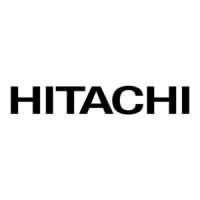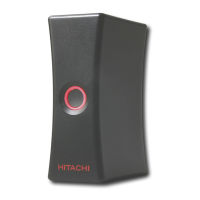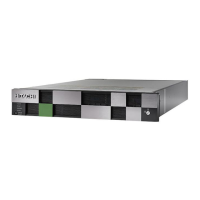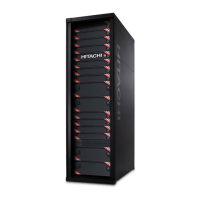Software overview
3–9
Hitachi Unified Storage VM Product Overview Guide
Replication features
Replication is the process of storing data in redundant sources, as a method
to ensure data consistency, and to improve reliability and accessibility of the
entire system. Replication differs from backup in that replication aims to
have the data in two or more places at once (theoretically, identical copies
of the data in all locations at the same time), while backup aims to have two
or more copies of the data at different points in time. Despite these
differences, there are many common design components in replication and
backup, as both are designed with data movement in mind. The Hitachi File
System provides several robust mechanisms for data movement, many of
which are useful for replication scenarios.
• Accelerated data copy (ADC) is a file-based, asynchronous method of
data replication. ADC allows the storage administrator to define a policy-
based data migration, or a mass data migration to occur either among
or between servers.
• Incremental data replication (IDR) is an optional replication feature
of the Hitachi File System. Replication occurs at the file level, and only
includes files that have changed since the last scheduled replication.
Multiple schedules may be defined on a per-EVS basis with support for
pre- and post-scripting, enabling automated functions to occur prior to
and immediately after the IDR schedule.
•
Object replication
The Hitachi File System is object-based, which means core file system
structures and user data are stored as objects, rather than files or blocks.
Object replication takes advantage of this structure to replicate these blocks
natively, regardless of which file or directory that they may belong to, which
negates the need to assemble all of the objects associated with a file before
transfer, making the overall transfer more efficient.
The key benefits of object-based replication include:
• Replication performance - Full replication performance will generally
improve 2-3x depending on the structure of the file system. The greatest
performance improvements will be seen in the incremental replication,
especially for customers that have dense file systems (millions of small
files) or those that have a high rate of change in the file system.
• Improved disaster recovery - Object replication enables the ability to
quickly failover in the event of a disaster.
• Disaster recovery (DR) or backup - Customers using replication for
disaster recovery and business continuance will see major benefits from
object replication and the disaster recovery features that it enables.
• Dense file systems - file systems with millions of small files will realize
a major benefit for the time to start and complete incremental
replication. Even if the change rate is low, object replication will start
much faster due to the time difference required for change discovery,
and complete faster with its ability to fill the pipeline.
